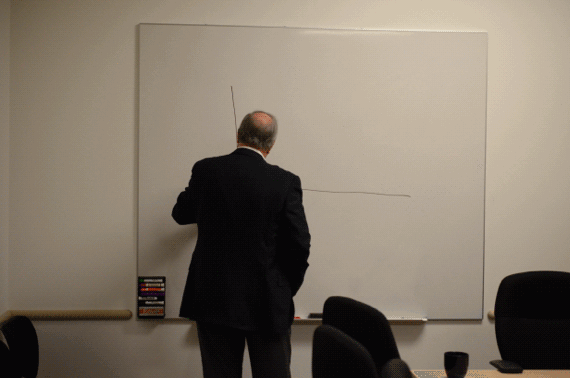3D Printing an Ear -- aka "High-Fidelity Tissue Engineering"
Adam Rifkin stashed this in 3-D Printers
Stashed in: History of Tech!, Medicine, Singularity!
Biotechnology uses of 3-D Printers has only just begun.
Cornell University researchers have successfully printed EARS.
George Dvorsky writes:
The potential for 3D printers is quite mind-blowing, especially when considering their role in biotechnology. The latest breakthrough in this regard comes from Cornell University researchers who showed that it's possible to create a replacement ear using a 3D printer and an injection of living cells. Once refined, the technique will allow biomedical engineers to print customized ears for children born with malformed ones, or people who have lost theirs to accident or disease.
Normally, prosthetic reconstructions are suboptimal; they don't look realistic and they lack the qualities of real tissue. Current techniques are also fairly invasive and demanding on the patient, most of whom are children.
Looking to change this, researchers Alyssa Reiffel, Lawrence Bonassar, Jason Spector, and colleagues employed a 3D printing technique they refer to as high-fidelity tissue engineering. Their results now appear in PLOS One.
In this experiment, the researchers used the cartilage from a cow, but they envision they day when it'll be possible to cultivate enough of a person's ear so that the growth and implantation can happen right there in the lab.
The Cornell team started with a 3-D camera that rapidly rotates around a child's head for a picture of the existing ear to match. It beams the ear's geometry into a computer, without the mess of a traditional mold or the radiation if CT scans were used to measure ear anatomy.
"Kids aren't afraid of it," said Bonassar, who used his then-5-year-old twin daughters' healthy ears as models.
From that image, the 3-D printer produced a soft mold of the ear. Bonassar injected it with a special collagen gel that's full of cow cells that produce cartilage - forming a scaffolding. Over the next few weeks, cartilage grew to replace the collagen. At three months, it appeared to be a flexible and workable outer ear, the study concluded.
Looking ahead, the researchers will attempt to use a patient's own cells in the 3D printing process.
It's also important to remember that cartilage is probably the easiest body part to generate with a 3D printer, as it doesn't require blood vessels growing inside it to survive. Growing more complex tissue and organs will be significantly more challenging for biomedical engineers.
Still, this opens an amazing door.











2:04 PM Feb 21 2013